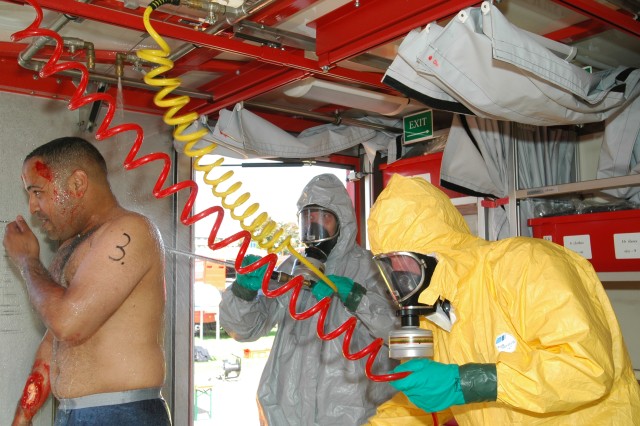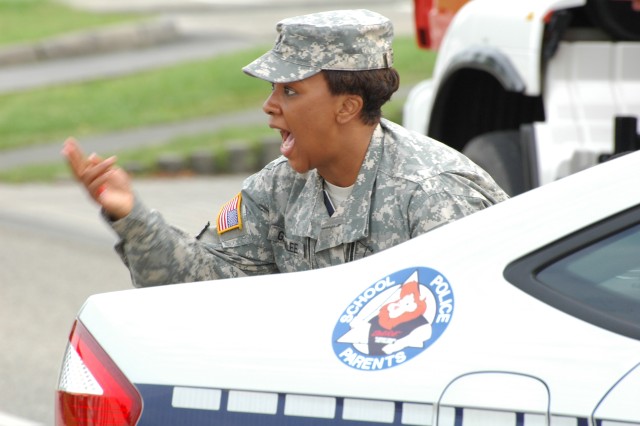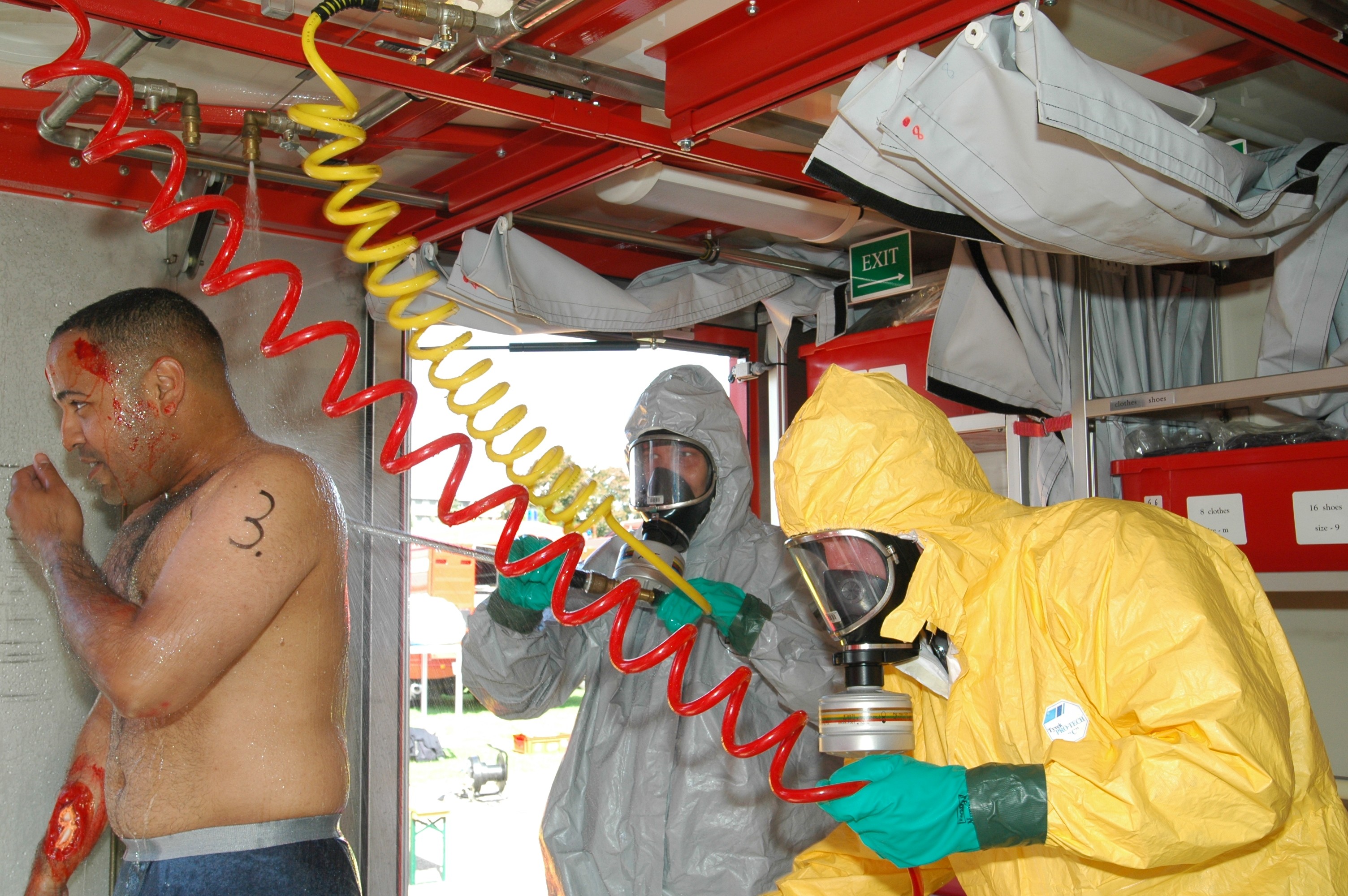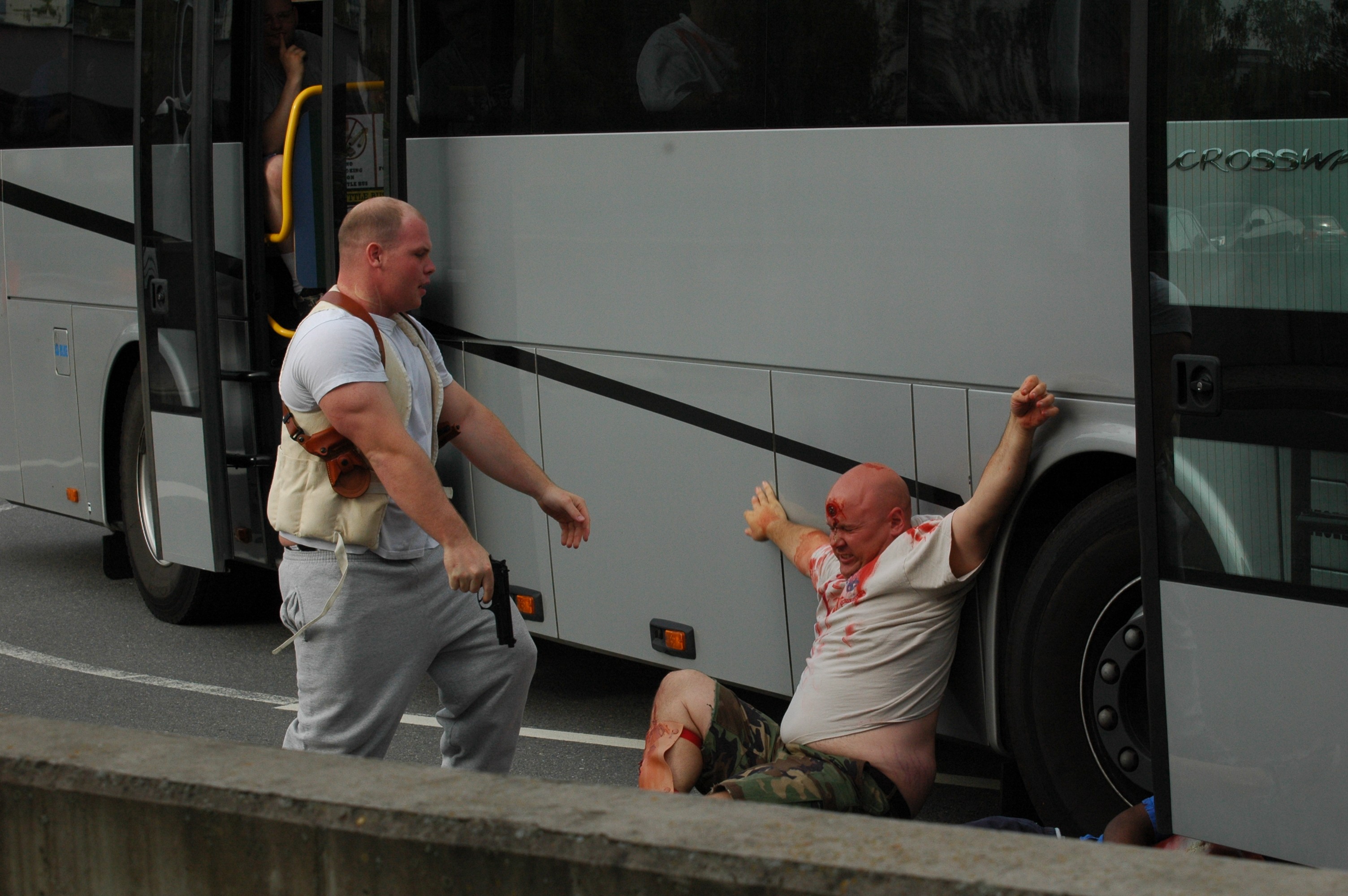HEIDELBERG, Germany -- A simulated radioactive-laced bomb was detonated on Nachrichten Kaserne Saturday morning killing several Soldiers and wounding even more.
A terrorist hijacked a community shuttle bus and attempted to enter the kaserne. After being denied access by barriers, he held 30 hostages - executing three - on the bus before a breakdown in negotiations led him to detonate his explosive vest.
The incident was part of an annual anti-terror and consequence management exercise designed to test the response of community emergency crews and validate the procedures in place to handle this type of situation.
"The lessons we learned today are extremely valuable in the world we live in today," said Col. Paula K. Underwood, commander, Heidelberg Medical Department Activity, addressing all the participants in the exercise in an after action review.
The exercise was a full-scope exercise using both military and local national emergency response assets according to Master Sgt. David Ralston, U.S. Army Garrison Heidelberg Directorate of Plans, Training and Mobilization and Security.
"This helps validate the anti-terrorism and force protection plans for the hospital and the community," Ralston said. "It's an evaluation of the plan we already have and will identify any changes we need to make to make it more effective.
"We're testing not just our plan but allowing the city of Heidelberg and their first responders to train."
"This exercise incorporated the entire spectrum of emergency services," said Lt. Col. Robert White, USAG Heidelberg commander, "from fire fighters and medical personnel to hostage negotiators and law enforcement; a total team effort that reminds us just how complicated a coordinated response can be and how many players there really are in case we have to do this for real."
After the simulated explosion, two German firemen in hazardous material suits tested the air surrounding the blast and determined radiation was present.
As they withdrew from the scene, a detachment of medics from HMEDDAC entered the blast area wearing protective gear and began administering first aid and transporting victims out of the contaminated area and into a staging area where they all awaited decontamination.
The German fire department decontaminated everyone through several stations before the victims were able to be triaged and stabilized by an emergency medical team from HMEDDAC before being nominally transported by the German Red Cross to host nation medical facilities.
"I am amazed at the host nation response," said Col. William Butcher, commander, USAG Baden-WAfA1/4rttemberg, following the end of the exercise. It's the host nation support that Butcher reminded everyone about at the AAR.
"(The host nation emergency responders) help keep you and I safe."
(Editor's Note: Jason Austin writes for the USAG Baden-WAfA1/4rttemberg newspaper, the Herald Post.)






Social Sharing